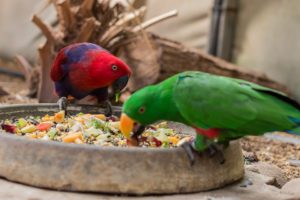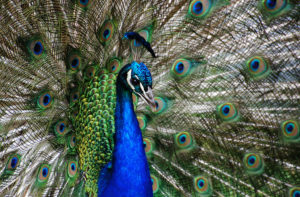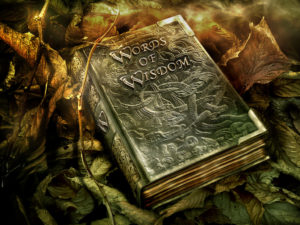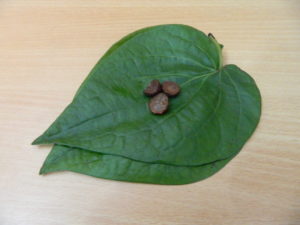 |
| Ayurveda Stories |
Ayurveda Stories! But why? Just to make you Read!
Ayurveda Story No 1:
Ayurveda text mentions curious facts about identifying the presence of poison in food. It is cited that the poison or toxicity in the food has varied effect on the birds that consume the same.

When Birds Eat Poison
- Whereas the Crow loses the pitch of its voice,
- Parrot and Mynah begin to yell
- the Goose loses its gait,
- the Cuckoo bird loses its pleasant tone,
- the Cock starts to scream
- And a bird having the name ‘Jeevjivak’ (which means life) tends to die at the very sight of poison.
When Animals Eat Poison
- Similarly, some animals show distinct characteristics on eating the poisoned food.
- Whereas Monkeys generally tend to immediately defecate,
- the Mongoose shows raised hair on its body
- and the Deer starts to cry.
Interesting Facts
It is also interesting to note that the Peacock shows reverse reaction on eating poison. Whereas this bird would exhibit pleasant and joyful disposition on eating some poisonous food ingredient, it is also exciting to know that when the Peacock looks at the poison, this reduces the effect of the venom!
Ayurveda Story No 2:
After completing of the meal, Vishrama (small nap or rest) is recommended in Ayurveda text. For this, at first 8 breaths need to be taken while lying on the back in supine position, then 16 breaths on the right side and thereafter 32 breaths are to be taken while lying on your left side.
Logic Behind This
The logic behind this is that lying straight on the back for a longer time can cause regurgitation of the ingested food. It is therefore advised that only 8 breaths are sufficient in this position. Thereafter lying first on the right and then on the left side helps the food that is being digested to come in contact with the gastric juices and the gastric acid for proper digestion of the food. This information is mentioned in Ayurveda text describing Bhojanotar Karma, the accentuated ritual of diet and digestion.
Ayurveda Story No 3:
The merits as well as demerits in Shastra (Weapon), Shaastra (Wisdom text) and Jala (Water) are invariably proportional to the Paatra (Container/Subject).
- This means that when a weapon is in the hands of a brave person, it provides victory and thus proves useful.
- Whereas when the same weapon lies in the hands of a timid man, it would cause harm and defeat for him.
- Similarly, the water lying in clean and clear container would provide with health benefits, and yet when the same water is stored in dirty container, it will cause disease.
Wisdom Prevails
Thus is the influence of the wisdom text. When the knowledge text is read and understood by a wise person referred to as Supatra (Eligible Subject), he would use the awareness for the betterment of one and all;. Whereas the same words of wisdom when read by a person with lesser intellect and understanding who is a Kupatra (Incorrect Subject), would cause unwanted confusion and disorder.

Ayurveda conveys that Shaastra (Wisdom text) is like an earthen lamp which provides with the guiding light for enhancing the intelligence as well as the insight. And thus, when the physician is a true follower of the same, there are negligible chances that he could make a mistake in the treatment that he offers.
Ayurveda Story No 4:
Just after finishing of the meal, there is natural dominance of Kapha dosha, and many times if this is not taken care of, the Pachaka Pitta (Pitta dosha or fire body humor which accounts for digestion of the ingested meal) remains hampered due to Kapha dosha (Phlegm body humor), and thus causes indigestion or slow digestion.
Recommended Herbs And Condiments
In this case, Ayurveda text recommends intake of Paan (Betel leaf), or some aromatic herbs and condiments like Lavanga (Cloves), Shatpushpa, Jatiphala etc just after taking the meal.
How These Help?
These herbs have the dominant tastes of Katu, Tikhta and Kshaya rasas (pungent, bitter and astringent tastes).
Other than enhancing the Pachaka Pitta
and decreasing the Kapha dosha for proper digestion of diet,
these tend to provide salivation,
stimulate the taste buds,
enhance the enzymatic secretion,
and also provide with de-worming cover;
thus resulting into proper digestion as well as assimilation of the eaten food. Watch the video of Ayurveda doshas.
Article published here
About the Author:
Dr Sonica Krishan is Author and Speaker in the areas of Healthy and Joyous Living through Ayurveda, Meditation, Yoga and other Contemplative practices. She is a leading Ayurveda Professional in India. She is also Health Writer, Columnist, Editor, Ayurveda Consultant and Holistic Healing Coach. Dr Sonica is open for National as well as International Collaborations with interested people / institutions in fields of Ayurveda, Meditation and Yoga.
Dr Sonica Krishan’s Books are available at Amazon
Related Posts:
Healthy Living through “Dosha Healing” by Dr. Sonica Krishan
3 Indispensable Lessons Life Has Taught Me





